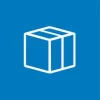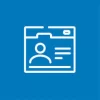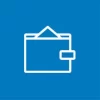The standard for Swiss bank deposit slips has been completely remodeled. From June 30, 2020, a new standard will be used for deposit slips in Switzerland. The new standard includes a QR code, a deposit section and a receipt.
Here, moneyland.ch answers the most important questions about the new QR-bill deposit slip.
What is the QR-bill?
The QR-bill is a deposit slip which can be used to deposit money into an account. In Switzerland, deposit slips are widely used in billing. Since their introduction in 1906, Swiss deposit slips have undergone a series of upgrades. The last generation of deposit slips came in two varieties: The orange inpayment slip with a reference number (ISR) and the red inpayment slip without a reference number (IS).
The new deposit slip is known as the QR-bill. In addition to the basic bill, the QR-bill also includes a deposit section and a receipt. The deposit section and receipt – the two components of the previous deposit slips – can also be provided separately from the bill.
What is changing?
- A single deposit slip – the QR-bill – replaces all of the different orange and red deposit slips previously used.
- The most important change is the addition of the Swiss QR Code. The centers of the QR codes used on the QR-bill resemble a Swiss cross. The QR code includes all of the same information which is shown on the deposit section. This means information can either be read directly from the deposit section or scanned from the QR code using a QR-code scanning device.
- The QR-bill does not make used of the red or orange paper used to identify the former deposit slips, but uses black on white print instead.
- The QR-bill does not include a special field for postal accounts.
- The QR-bill can be printed on regular paper with standard printers. That means any business can print their own deposit slips directly on bills rather than having to order blank deposit slips from banks or the post office. This is practical for businesses.
- The QR code can be scanned to create an e-bill which can be paid via online banking. This is practical for people who use online banking.
- The QR-bill comes in three versions: one without a QR reference, one with a QR reference and one with a creditor reference.
What is a QR-bill without a QR reference?
The QR-bill without a reference is the successor of the former red inpayment slip (IS). Unlike the previous deposit slip, the new QR-bill without a reference does not include a field for written instructions or references. However, the deposit amount and the name and address of the depositor can still be filled out by hand.
What is a QR-bill with a QR reference?
The QR-bill with a QR reference is the successor of the former orange deposit slip with a reference number (ESR). Unlike the QR-bill without a reference, it does not include fields which can be filled out by hand.
This is the kind of deposit slip which is used for billing by health insurance companies, telecom service providers, doctors, power companies and most other Swiss businesses. The reference numbers are identical to those used on the former orange deposit slips.
An important change: The QR-bill with a QR reference includes an IBAN number in place of the participant number used on the former ESR deposit slip. The IBAN used is a dedicated IBAN which can only be used for payments with a QR-bill. Postal account numbers are not included on the QR-bill.
The QR-bill with a QR reference provides the same advantages of the former ESR deposit slip. The reference number enables automated entry of transaction orders. This means they are also suitable for businesses which send out large numbers of bills.
What is a QR-bill with a creditor reference?
The QR-bill with a creditor reference is a new form of deposit slip. The structured creditor reference (SCOR) enables the exact allocation of payments. Each transaction has an individual, one-time identification number. The QR-bill with a creditor reference is based on the international ISO 11649 standard.
The QR-bill can only be used in Switzerland and Liechtenstein. However, the IBAN and the creditor reference can be used to receive transfers from outside of Switzerland in when combined with the Swift code of the recipient bank.
This form of QR-bill has advantages for companies that do business internationally. It lets businesses uses a unified billing system for both local and international payments.
How do I scan the QR code?
Many banks include QR-bill scanning in their mobile banking apps which enable QR code scanning with smartphones. The information scanned from the QR code is automatically transferred to online banking.
Some banks also offer QR code scanners – such as the PayEye devices. These devices let you transfer data directly from QR-bills into your book keeping or e-banking software.
Can I enter billing information manually?
Yes. If you prefer not to scan the QR code due to privacy concerns or other reasons, you can manually enter the billing information shown in the deposit section to make payments using online banking.
Can I use the QR code without the full bill?
Yes. The QR code can be printed on its own, without an accompanying bill. This means that a QR code can be included on a billboard, ad or brochure and used to make donations to a charity, for example. The QR code can be read with online banking software and a mobile phone, scanning all information directly into the mobile banking app where you can use it to transfer money.
Can I still pay my bills at the post office?
You can still pay bills at the post office using QR-bills. The post office does not charge you as the depositor when you pay bills. However, the recipient of the money has to pay fees to the post office, and these are relatively high in relation to the amount deposited. For example, the merchant which issued the bill must pay 1.20 francs per deposit under 50 francs, and 2.35 francs per deposit between 100 and 1000 francs.
Postfinance confirmed to moneyland.ch that deposits can still be made without QR bills. Post office customers can still make transactions at the counter without QR bills, but they need to provide all of the relevant data required. Postal service employees are required to ask customers to please ask creditors to send them printed QR-bills in the future.
Can I still use older deposit slips?
No, the previously used red and orange deposit slips were completely phased out in October 2022.
How can I create my own QR-bills?
All current bookkeeping software is capable of creating QR-bills. PostFinance offers its customers a QR-bill generator with which they can create QR-bills that can be printed or shared in PDF format.
How do banks recognize QR-bills with QR references?
Bank customers which issue QR-bills with QR references receive a special IBAN from their banks. This is known as a QR-IBAN, and can only be used for QR-bills with QR references. The money deposited into the special account which corresponds to the QR-IBAN is credited to the customer’s regular account.
If the fifth and sixth digits in an IBAN are 30 or 31, that IBAN is a QR-IBAN.
More on this topic:
Compare Swiss bank accounts now

 Deal of the Day
Deal of the Day 






